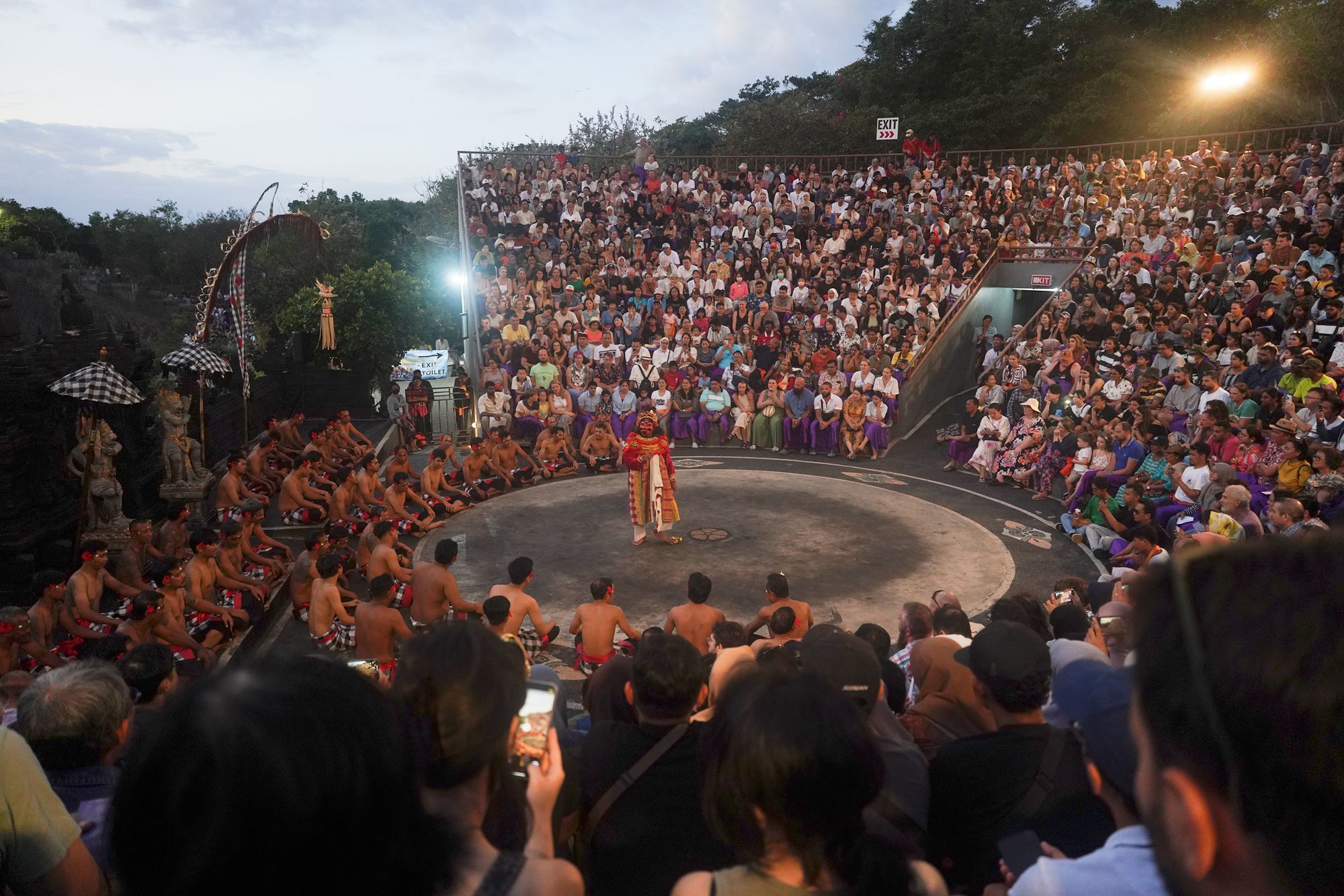Bali: Uluwatu Temple and Kecak Dance
Uluwatu Temple, or Pura Luhur Uluwatu, is one of the famous sea temples in Bali, perched on top of a cliff about 70 meters above the Indian Ocean. 945
Uluwatu Temple: Pecatu, South Kuta, Badung Regency, Bali, Indonesia
Date Picture Taken: July, 2024
This temple’s location offers not only spiritual significance but also breathtaking views of the ocean, especially at sunset.
This is a half-day tour that goes to this one temple.

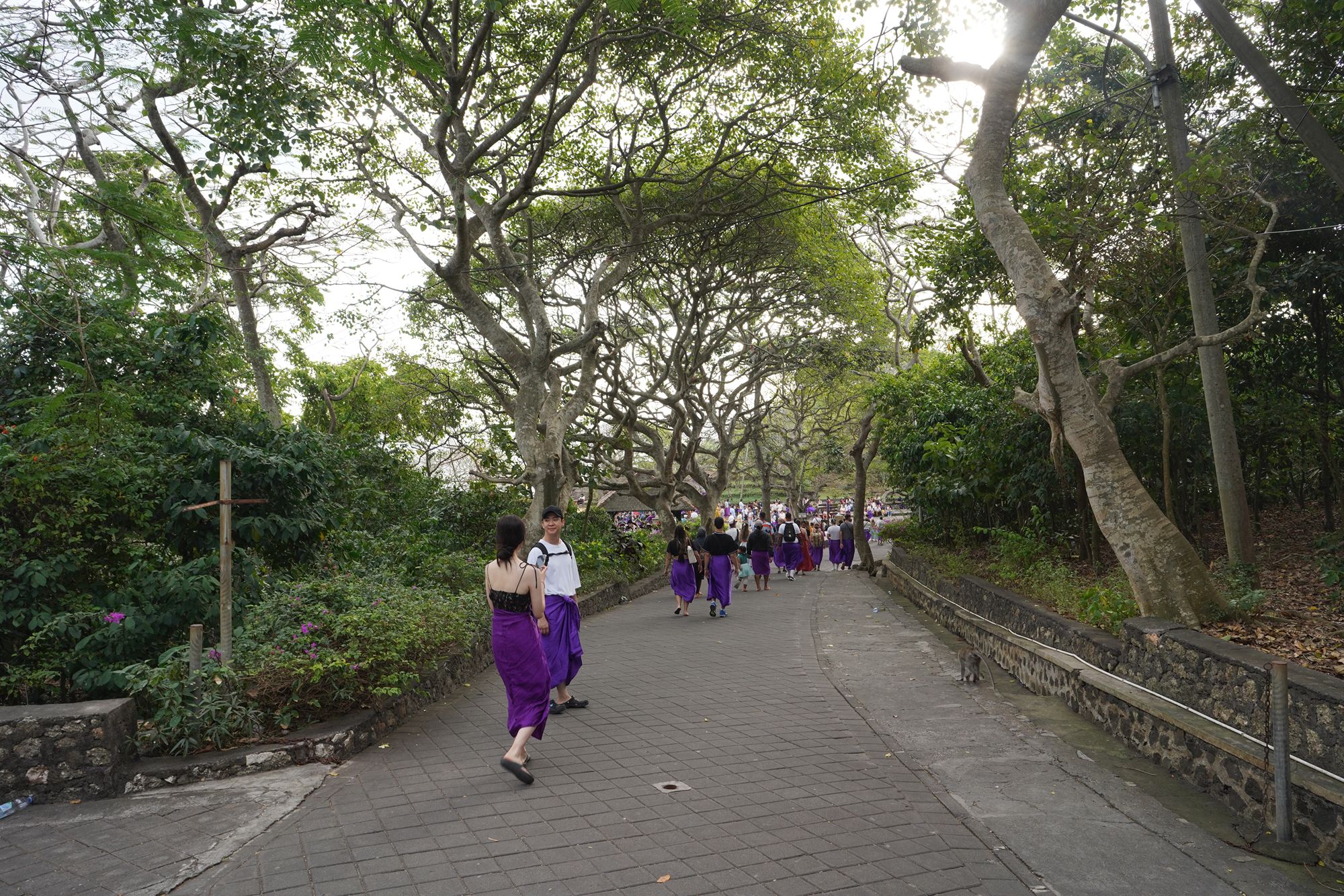
This temple has many free-roaming monkies






One side of the temple is the cliff

The cliff pathway leads to the top area of the temple.

Back side


Walked up to the upper side of the temple by following the path near the cliff.
Back side

Back side


Climbed more and looked at the back side again


Back side

The top side of the temple

These stairs are direct path to climb up to this place from below

This is the topmost temple area, but it is closed



On the other side of the top area, the path continues down along the cliff


I walked back to the topmost place to see what was behind the closed gate.

This was at the rear side of the closed door

Came back to the cliff path

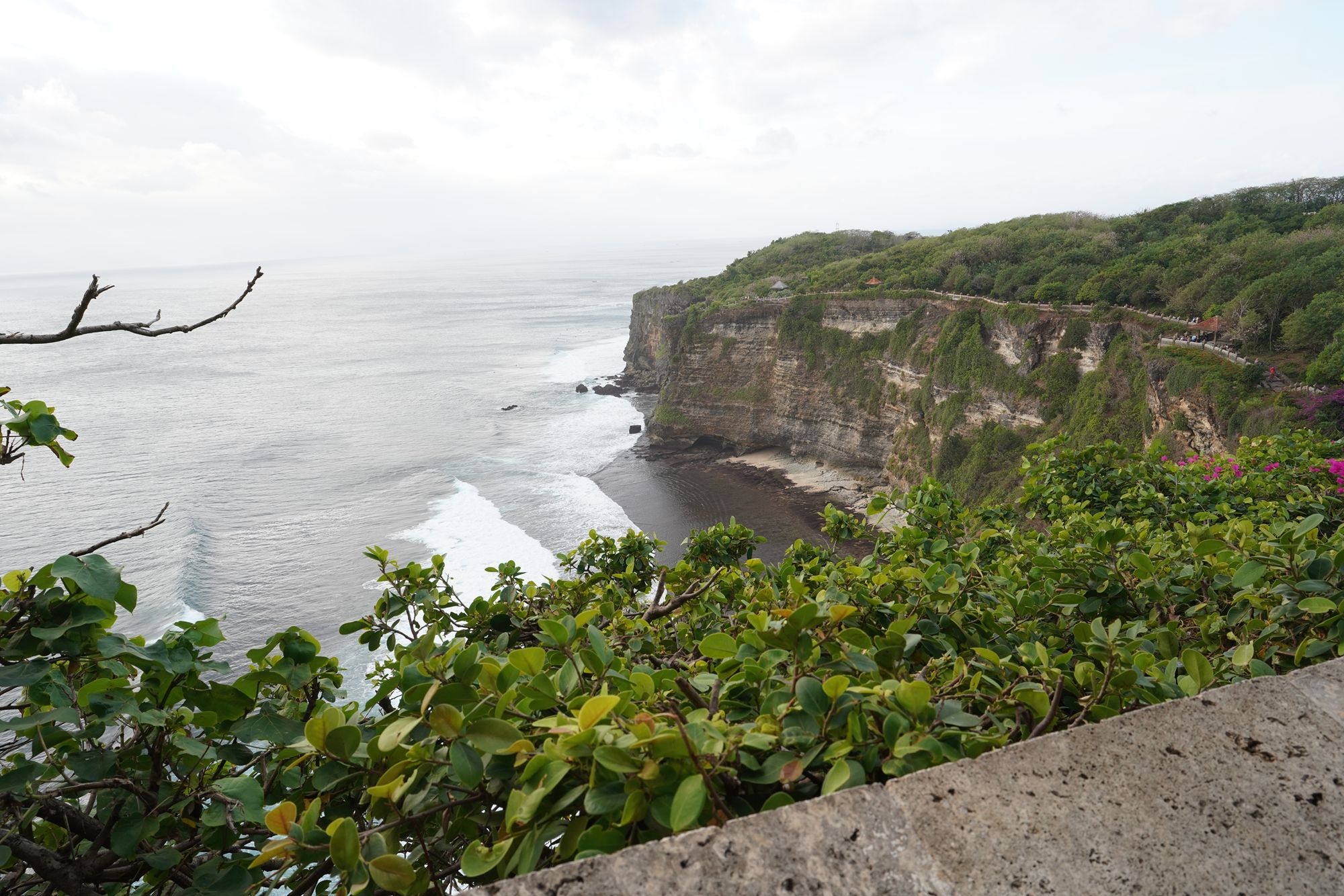
I walked all the way down the cliff path.


Back side
Uluwatu Temple is one of the six key temples believed to be Bali’s spiritual pillars.
It is dedicated to the sea gods and is an important part of Balinese spiritual life.
The temple’s name comes from the words “Ulu,” meaning “top” or “tip,” and “Watu,” meaning “stone” or “rock,” reflecting its location on the cliffs.


Like many Balinese temples, Uluwatu is home to several monkeys, which are believed to guard the temple. Visitors are advised to be cautious, as the monkeys are known to snatch belongings like sunglasses or hats.

Back side

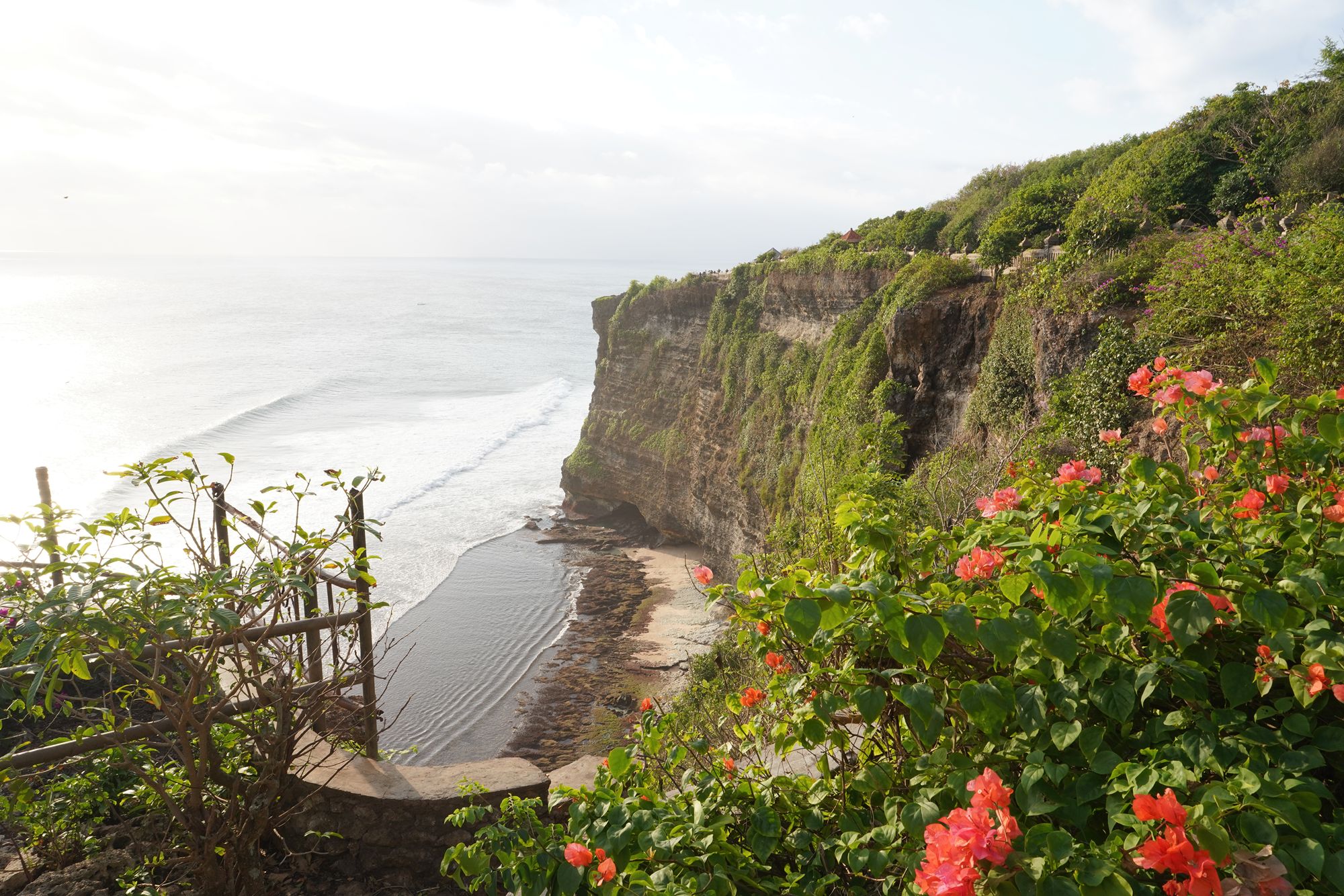
Back side


This location was where I stopped the cliff path hiking.


Walked back to the center of the temple through another path
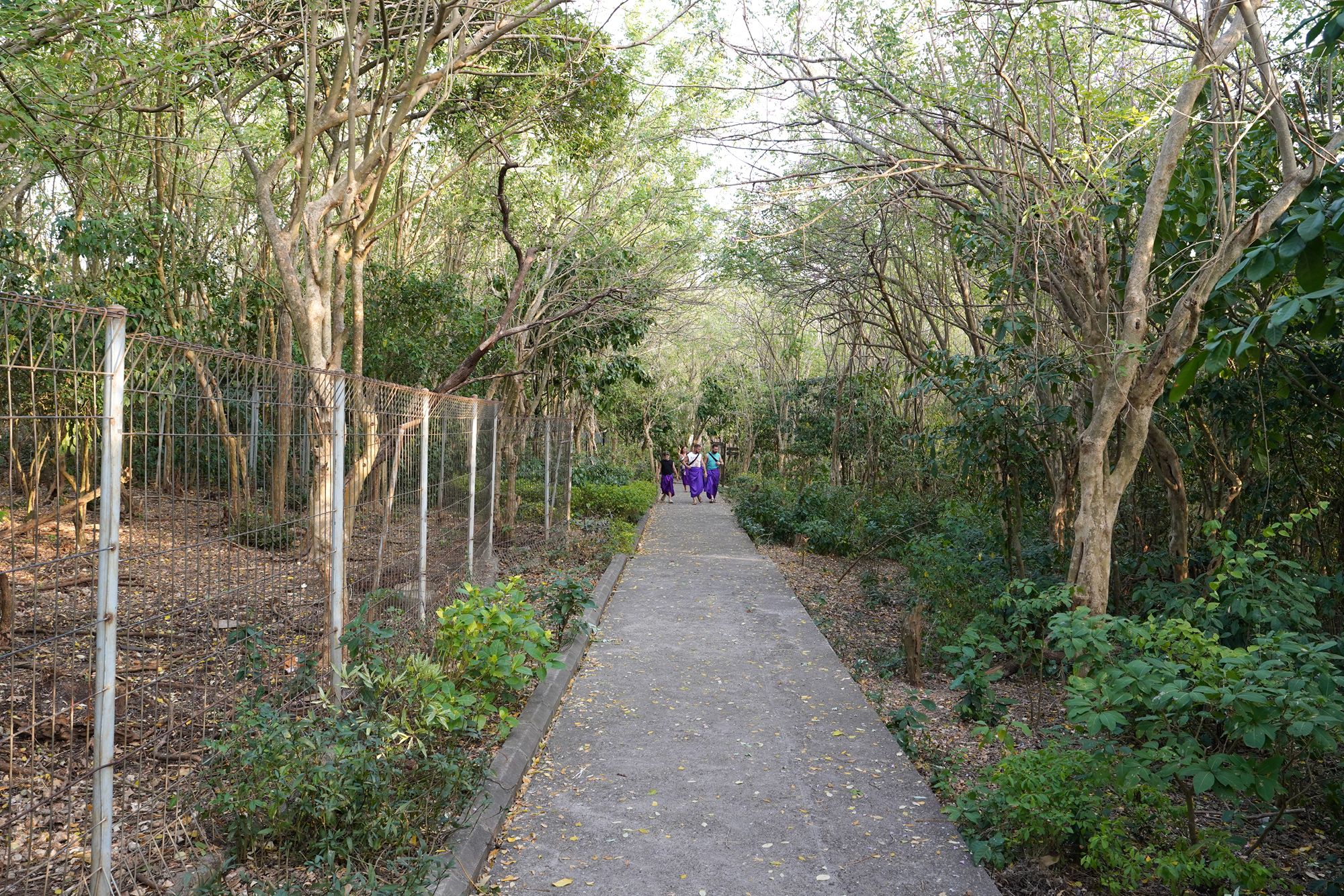







These stairs go to the top of the temple directly for one who does not want to walk the cliff path

Returned to where I started
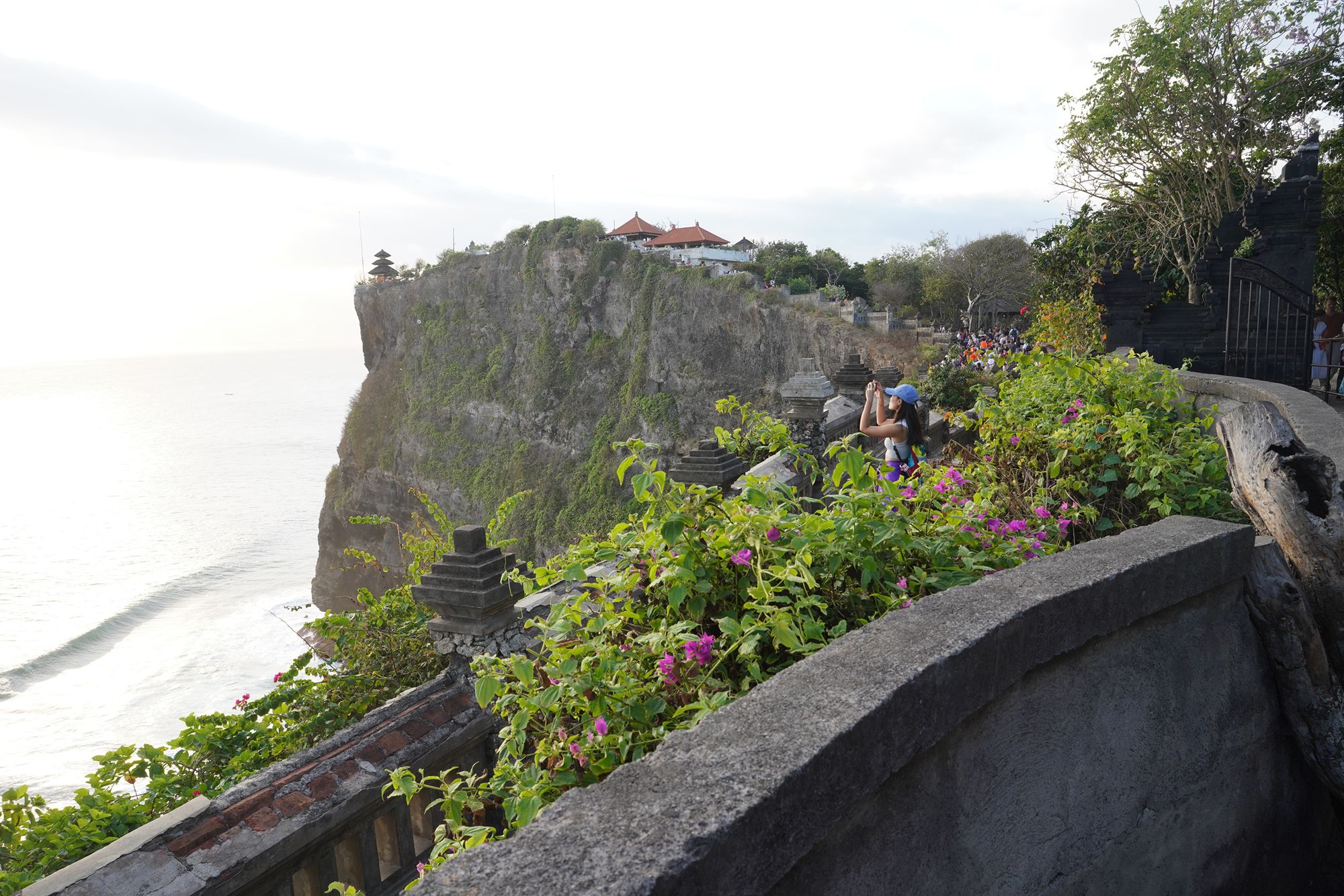

Walked to Kecak Dance Performance Arena

Every evening, there’s a traditional Kecak dance performance held at the temple. The dance narrates stories from the Ramayana and is accompanied by chanting from male performers sitting in a circle.





The Kecak Dance is one of Bali’s most famous traditional performances, known for its captivating combination of dance, chanting, and dramatic storytelling. It is sometimes referred to as the “monkey chant” dance due to the rhythmic vocal sounds made by the male chorus that forms an essential part of the performance.

The dance is performed by a group of up to 100 or more men who sit in a circle, chanting “cak” rhythmically. This sound creates a mesmerizing and hypnotic atmosphere, simulating the sounds of monkeys.
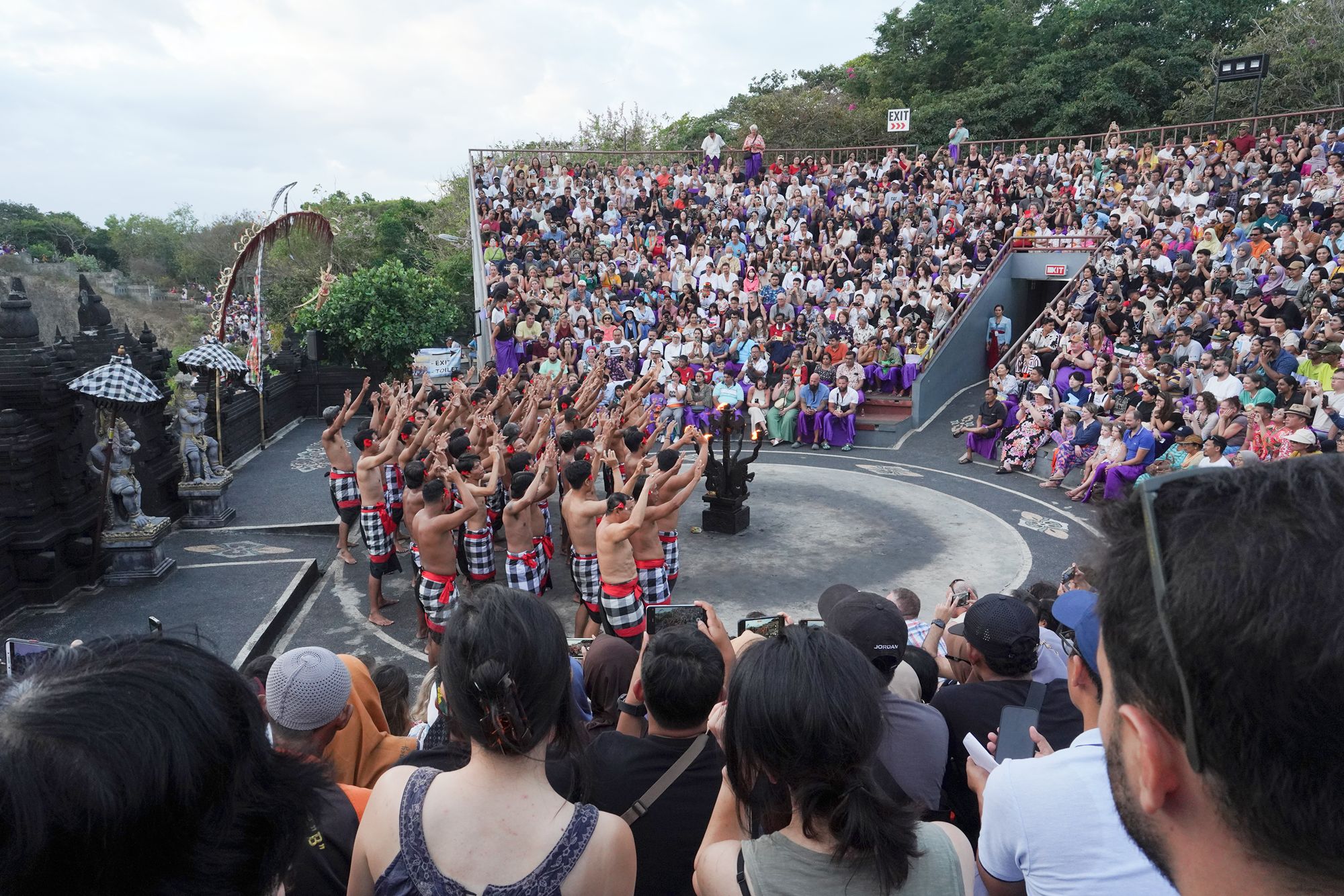
Unlike most Balinese dances, Kecak doesn’t use any musical instruments. The men’s continuous chanting, coordinated clapping, and body movements serve as the only “music” accompanying the performance.

The dance typically narrates a scene from the Ramayana, one of the great Hindu epics. The specific scene that is often portrayed is the rescue of Sita, the wife of Prince Rama, from the demon king Ravana.



